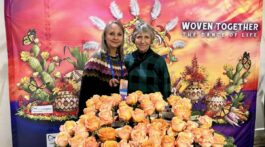I recently read Revelation’s description of the new Earth and noticed it switched back and forth noting concrete joys and interpersonal joys. By concrete joys, I mean joy taken from physical surroundings, like beautiful stone layers for city walls and the variety of fruit. By interpersonal joy, I mean God wiping tears off my face and eating leaves that heal me.
In her book, Joyful, Ingrid Fetell Lee talks about how many ideologies put pressure on humans to find joy in the interpersonal or spiritual things and not in our surroundings. But prison cells and hospital rooms with a view of green grass helped their inhabitants cope with stress better. People become more alert around sharp angles and relax around curved objects. One study discovered that no matter where a person lived, they all described an ideal landscape as green with trees and hills.
What I find in Revelation is there will be both: the connection with God that’ll heal our deepest wounds and satisfy our deepest needs AND the physical, tactile joys God created for us to enjoy all along. What struck me about the similarities in people’s responses to nature is it seems the blueprint of our ultimate home has been written in all of us, the home we ache for, where we’ll be safe and there will be rolling, green hills.
Have you ever moved into a house and thought, “I guess this is home. I mean, my people are here,” but it felt unfamiliar and only after a period of adjustment did you feel at home? When we arrive in the new Earth, I don’t think this will be the case. It will be vaguely familiar, like a scent takes you back to a sweet memory you can’t quite bring up. In deep relief we’ll plop down with a huge sigh, knowing we are finally truly home.










